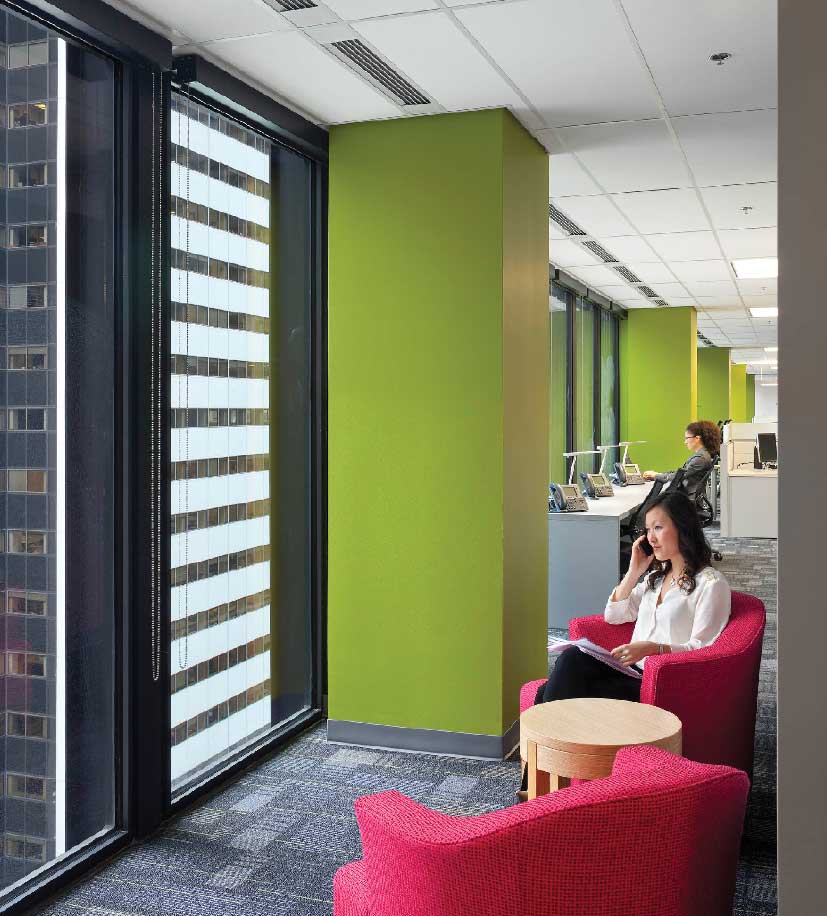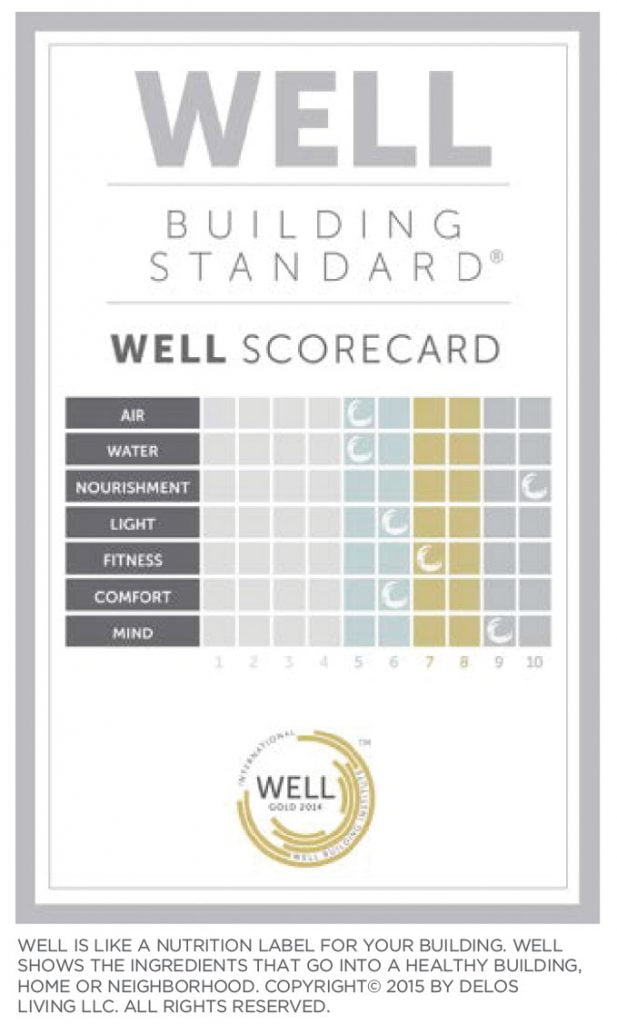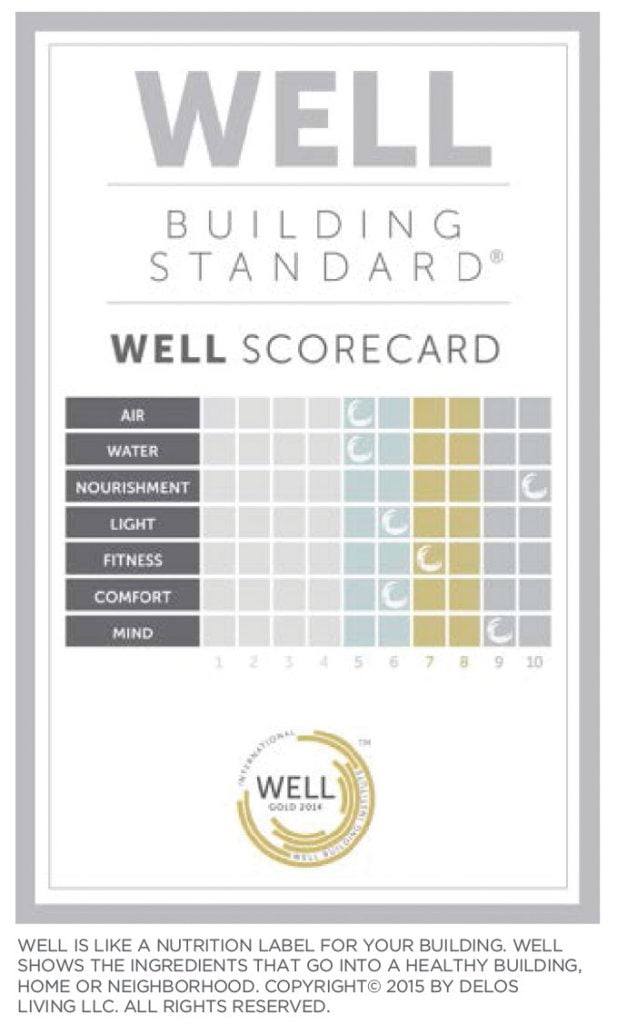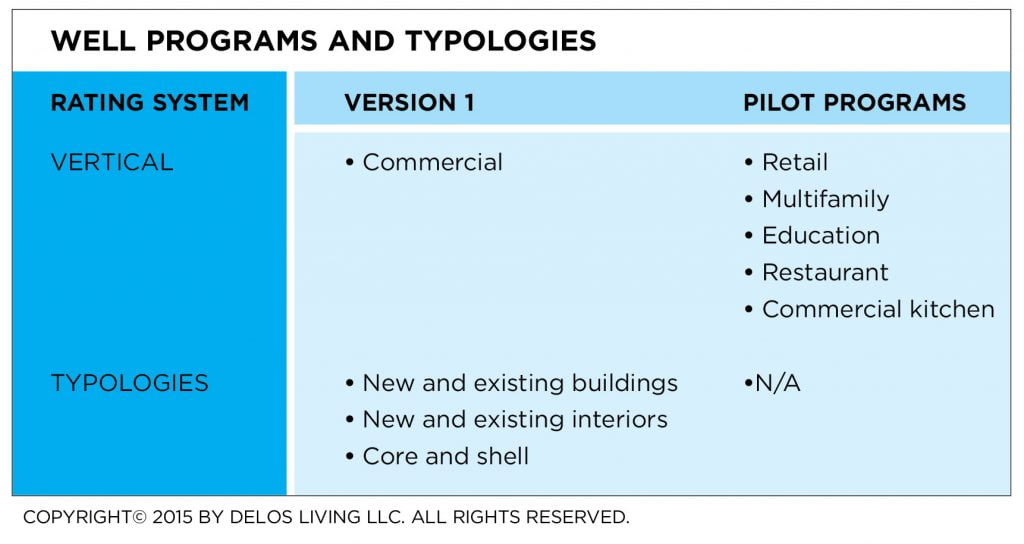As the average person now spends more than 90% of their time indoors, understanding how the built environment protects and supports human health is not only critical, but it presents a major opportunity. This is because healthy indoor environments can reduce toxic exposure, improve ventilation rates, support healthy eating and physical activity, enhance ergonomics, maximize daylighting and biophilic exposure, and allow for both focused group work and recovery time – to name just some of the benefits. Given this, the environments where we live, work, play and learn should enable us to more easily make these healthy choices.
By Whitney Austin Gray, Renée Rietveld and Martha MacInnis
Over the past decade, the building industry has increasingly positioned itself within the health and wellness conversation, with LEED as the catalyst, along with the Living Building Challenge, Active Design Guidelines and others. Yet, there was a need to move beyond indoor environmental quality issues to include whole-person health such as physical fitness, nourishment, mental health and wellness, and to support healthy behavior choices. If, after all, even with optimal air quality, you are still battling constant interruptions, glare from sunlight and temperature regulation issues, compounded by a lack of healthy food options and no opportunity for physical activity breaks – the human body will be affected in other ways.
A Path Toward Health and Wellness
In 2014, the International WELL Building Institute (IWBI) released the WELL Building Standard® [WELL] to address this exact need through a holistic approach. As the world’s first building standard to focus exclusively on enhancing people’s health and well-being through the built environment, WELL sets forth a path for designing buildings that support wellness while educating and engaging the design and health industries about the importance of building design on health. The culmination of seven years of rigorous research and development working with leading physicians, scientists and industry professionals, WELL is a performance-based certification system that marries best practices in design and construction with evidence-based medical and scientific research.
Projects earn WELL Certification by achieving features in seven categories of building performance – air, water, light, nourishment, fitness, comfort, and mind. Each WELL Feature is designed to address issues that impact the health, comfort or knowledge of occupants through design, operations and behavior.
The WELL Building Standard can be applied across many real estate sectors, with WELL v1 optimized for commercial and institutional office buildings. WELL is further organized into Project Typologies of New and Existing Buildings, New and Existing Interiors, and Core and Shell, which account for specific considerations that are unique to a particular building type. Pilot Programs are also available for market sectors including retail, multi-family residential, education, restaurant, and commercial kitchen projects.
WELL + LEED
WELL and LEED complement each other in the optimization of healthy and high performance environments. IWBI welcomes projects to pursue LEED alongside WELL in order to promote both environmental sustainability and human health. LEED certification is important for achieving the best possible outcomes for environmental sustainability, and WELL maximizes the potential for supporting human health and wellness.
This piece was written in collaboration with Whitney Austin Gray, PhD, LEED AP, International WELL Building Institute; Renée Rietveld, Manager, Communications and Content Strategy, CaGBC; and Martha MacInnis, Design Director, Workplace Experience, TD Bank Group.





